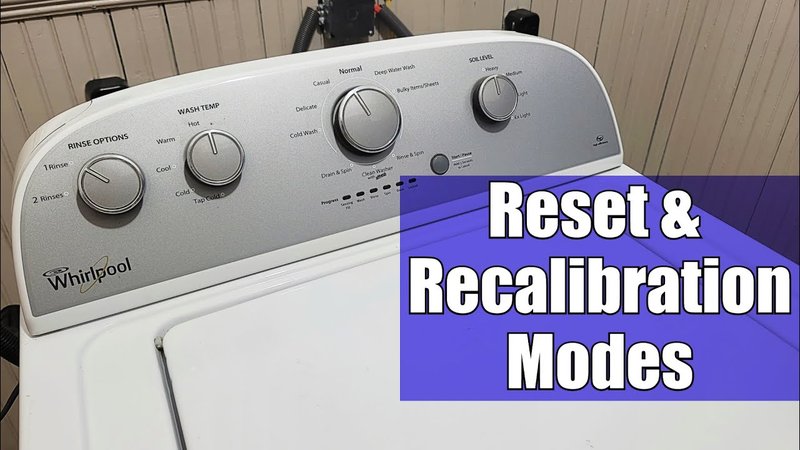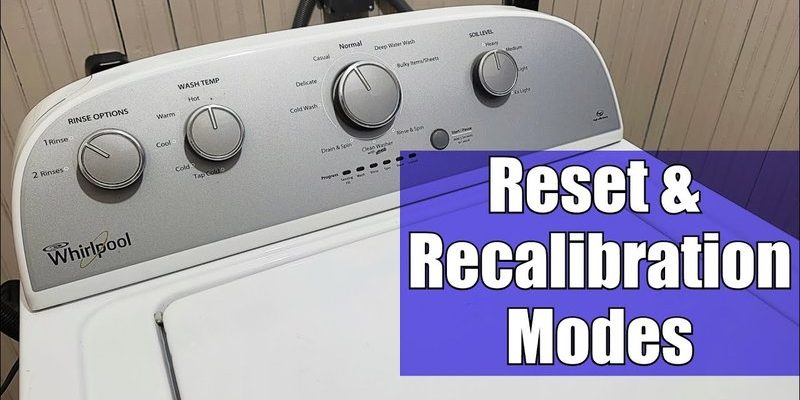
Error codes on washing machines are much like the check engine light in your car. They’re there to tell you something’s up, but they don’t always scream what the issue is in plain English. With Whirlpool washers, the “OE” error usually refers to a drainage problem. The machine believes it’s taking too long to empty the water. This could be due to a variety of reasons, such as a blocked hose, a broken pump, or even an electrical glitch. The question is: Can something as simple as resetting the machine set things right?
Understanding the OE Error Code
So, what exactly is this “OE” code all about? Picture this: think of your washing machine’s drainage system as a sophisticated plumbing network. Water flows in and out, driven by an array of components working harmoniously. However, when the “OE” error shows up, it means something in this harmonious system isn’t functioning quite as it should. Essentially, it’s like trying to water a garden with a clogged hose.
The most common reason behind the OE error is a blockage. This could be something as mundane as a tangled sock trapped in the drain hose or a bunch of lint accumulating over time. Gravity is a major player here. If the hose is too high, gravity can’t help with the drainage, resulting in water staying in the tub longer than it should.
Sometimes, though, the issue might not be so simple. It could be an issue with the pump itself—the heart of the drainage system. If it’s faulty, the machine won’t properly push out the water, regardless of any reset attempts. Resetting can solve software glitches, but it won’t magically clear out physical blockages or fix broken components. So, in some cases, you might need to do a bit more legwork than just pressing a reset button.
Does Resetting Your Washer Actually Help?
You might be tempted to think of a reset as a magical fix-it button, but, much like rebooting a computer, it only solves certain types of problems—mainly those related to electronic or software glitches. Resetting your Whirlpool washer can sometimes clear the OE error if it’s caused by a minor electronic hiccup. It’s like giving your machine a fresh start, erasing any temporary miscommunications between parts.
To reset your machine, simply unplug it from the power source for a minute or two. This drains the static electricity from the system, potentially clearing any stored errors. Think of it as giving your washing machine a brief nap to recharge and clear its mind. Once you plug it back in, it might just be ready to go, error-free.
However, if the error stems from a physical issue, like a block in the drain hose or a faulty pump, no amount of resetting will help. It’s akin to trying to turn a computer off and on again to mend a broken keyboard; the underlying problem remains. When resetting doesn’t do the trick, it’s time to dig deeper.
Tackling the Root Cause of the OE Error
If resetting doesn’t help, it’s time to roll up your sleeves and address the underlying issues. Start by inspecting the washer’s drainage system. Check the drain hose: is it kinked or clogged with debris? A quick rinse with water might clear minor blockages, restoring the hose’s functionality.
Next, examine the pump filter. Often overlooked, this little component catches debris before it reaches the pump. If it’s clogged, water can’t flow freely, leading to that pesky OE error. Cleaning the filter regularly might prevent many drainage issues. If you’re unsure how to locate or clean these parts, your washer’s manual is a handy guide and worth consulting.
If you’re still facing trouble after cleaning the hose and filter, the pump might be the culprit. In such cases, calling a professional could be the best course of action. They can diagnose and replace faulty parts, saving you the headache of guesswork.
Preventative Measures and Final Thoughts
To keep your Whirlpool washing machine running smoothly, regular maintenance is key. Think of it like brushing your teeth to prevent cavities. Regularly check for blockages and clean the pump filter to avert future issues. Ensuring that the drain hose is properly positioned and free of kinks can also prevent the OE error from recurring.
Remember, while resetting can address some issues, it’s not a catch-all solution. Regular upkeep and being alert to your washer’s performance can save you both time and money in the long run. If problems persist, seek professional help rather than risking further damage by repeatedly resetting the machine.
Ultimately, while the reset button can be your first line of defense against minor glitches, understanding and maintaining your washing machine is vital for peace of mind. By addressing small issues before they escalate, you’ll enjoy a machine that keeps your laundry fresh and your stress low.
